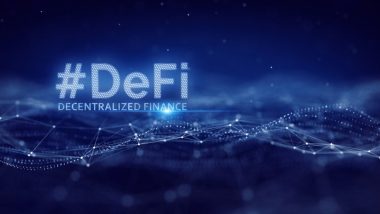2020 has come and gone with varying challenges and troubles; countries battling with a national disaster, the breakout of a pandemic that ground the world to a stop, the death of global stars and a host of other challenges.
One positivity, we as crypto enthusiasts can look forward to this year is the increased adoption of crypto assets and building on the undeniable growth decentralized finance (DeFi) has seen in the previous year.
When this year began, many people had doubts about the prospects and the advantages the crypto world held, but as the year progressed, many skeptics were converted to followers.
During the enforced lockdown, economies of the world suffered and it invariably affected the crypto space too; but, DeFi shone through all of the gloom to stamp itself as the future of what the global financial system should aim for.
In 2020, we began to realize some of the many disadvantages that the traditional financial system held. One of such is the issue of regulations that has stifled the growth of the industry, another is the case of the little to no interest rates that these traditional institutions give to their users and not forgetting that these institutions charge a high transaction fee for their services that operate at an almost snail speed when compared to DeFi.
So, when DeFi came in and people realized they could enjoy so much more, the industry blew up and from having just over $1 billion locked in its total value as of the beginning of this year, the sector currently has over $13 billion locked away in it. This is a massive rise for a sector that many had described as unsustainable and as a bubble.
The growth of the industry though has brought with it certain challenges. Like the issue of accountability; because anybody could develop a DApp, scammers have taken advantage of this and have released dubious DApps that have led to the loss of many investments. These losses are borne solely by the investors unlike in a traditional financial system where the institutions could be held accountable, here, there is practically nobody to hold liable for your lost investments.
Another major challenge of the industry is the proliferation of DApps everywhere. Presently, the number of DApps running on the Ethereum network cannot be counted. There are so many of them that investors may not know which to invest in or not. This proliferation of DApps brings about the issue of standard as they cannot be shut even when they are unable to meet the minimum standard of operations expected of a DApp. For a first time investor in the field, this could prove really tricky.
Here is a review of 5 dapps that would blow us off this year:
Probably the most popular DeFi DApp. The platform was the first to get to the $1 billion mark in the field and it appears to be rapidly reaching for the $2 billion benchmark too.
The platform allows traders to deposit Ethereum and take loans in its native token DAI. This groundbreaking DApp allows these traders to take different loans without necessarily having to provide their names or any other vital information.
Uniswap is probably the largest decentralized exchange (DEX) platform on DeFi. What makes it different is the fact that as a DEX, it cannot impose any form of penalties on an account the same way exchanges like Coinbase or Binance might do.
Liquidity on this platform is provided by the users who deposit their assets with the platform. For this show of trust, the platform in turn rewards them with a percentage of whatever it makes from transaction fees.
Nimbus started out as a Fintech company that delivered blockchain-based financial solutions to 50,000 users. The company is expanding into the DeFi space with the development of an ecosystem that combines the best practices of both traditional and decentralized finance to address the earlier highlighted challenges faced in the industry.
According to the company, the new DeFi ecosystem they have just launched would offer its users more than different 10 earning strategies that are based on clear revenue generation mechanisms.
Most of the DApps in this ecosystem are attached to a traditional financial tool and these products have proved their effectiveness in generating returns over the decades; an example is IPOs while another is Startup crowdfunding with access to equity and convertible notes.
These products would only become available to crypto users for the first time, and their associated risks will be negated using DeFi mechanisms. The platform also has the NBU native token that its users would use to access all of the 10 pools and DApps on the ecosystem. The launch of the token was very successful with a $35 million market capitalization reached within just 2 days after the listing on Nimbus internal exchange.
It is also worthy to note that they will soon launch a Governance token that would enable holders to vote on how the running of the platform would be and they also are liable to earn certain rewards for their troubles
Users of Nimbus platform can expect the addition of third-party DApps, in the nearest future, that could go on to make the ecosystem the go-to platform for investors who may be looking for investment products that lurk around the world.
- LID Protocol
There is no denying that one of the major fears of users in the DeFi sector is the fear of losing it all. LID Proton offers that layer of protection by offering a “Proof of Liquidity” to its holders. This proof helps to resolve issues that may pertain to scams or liquidity issues that are commonly associated with some exchanges like Uniswap.
LID Protocol works in a way that developers of any token would find it extremely difficult or impossible for them to withdraw the liquidity on their tokens(projects) for a certain period.
This ensures that scammers would be unable to cheat investors because their liquidity would remain locked within the developed token
Basically, what LID Protocol does is to give investors an assurance that they are investing in a secure and legitimate token, i.e. it acts like an insurance policy for these investors.
In conclusion, what these older and newer DApps show is that DeFi has had a massive 2020 and it appears geared towards dominating 2021 too. Users can expect many more DApps that would try to cut out the many challenges that the industry might be facing.
And possibly, we could also see a wider acceptance and coverage of DApps by the wider public as well.














 Quickly
Quickly



















